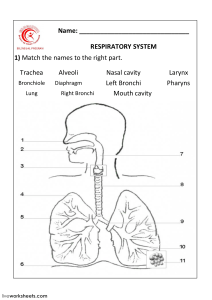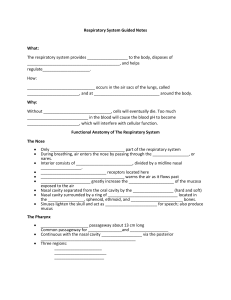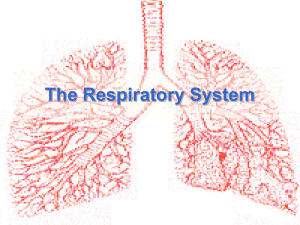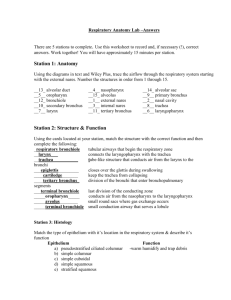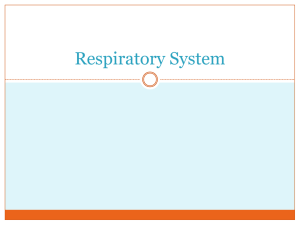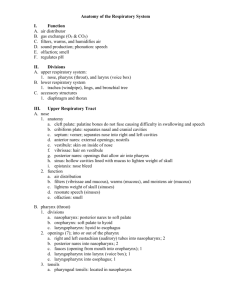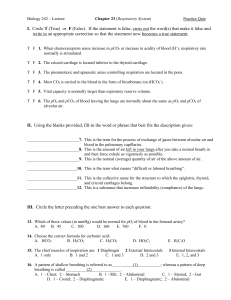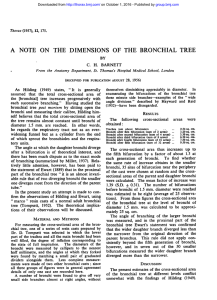Respiratory
advertisement
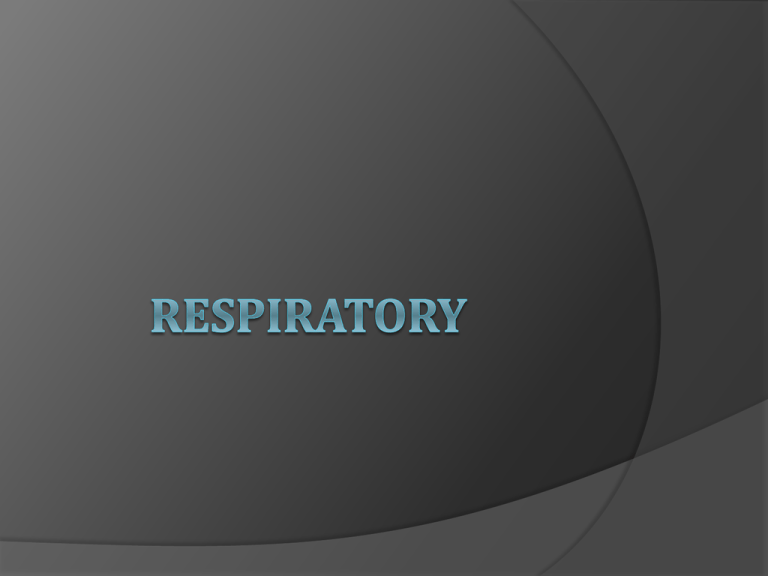
Upper Respiratory external nares (nostrils) nasal cavity nasal septum Perpendicular plate vomer bone internal nares The nose leads to the pharynx through this pair of openings creating a pathway for air to reach the lungs Nasal conchae superior middle inferior Thin scroll-shaped bony structures that force air over a large surface area for rapid warming and filtering Paranasal sinuses ethmoid Contains 3-18 small air spaces or “cells” inside ethmoid bone frontal maxillary sphenoid hard palate pharynx Throat: extends from internal nares down to the larynx nasopharynx Posterior to nasal cavity and extends to the plane of the soft palate oropharynx Posterior to oral cavity and extends from soft palate to the level of the hyoid bone laryngopharynx Begins at the level of the hyoid bone and connects the esophagus with the larynx (voice box) larynx epiglottis thyroid cartilage arytenoid cartilage corniculate cartilage cricoid cartilage Vocal cords False vocal cord True vocal cord glottis (opening) Lower Respiratory Tract trachea carina One of the most sensitive areas for triggering a cough reflex respiratory tree Begins at the trachea and ends at the terminal bronchioles Trachea Primary Bronchi Secondary Bronchi Tertiary Bronchi Bronchioles Terminal Bronchioles primary bronchi secondary (lobar) bronchi tertiary (segmental) bronchi intralobular bronchiole terminal bronchiole respiratory bronchiole alveolar duct alveolar sac alveoli lungs lobes Right lung – 3 lobes Left lung – 2 lobes RESPIRATORY MUSCLES KNOW the muscle involved in normal and forced ventilation INSPIRATORY MUSCLES diaphragm external intercostals sternocleidomastoid pectoralis minor scalenes EXPIRATORY MUSCLES internal intercostals rectus abdominis external oblique internal oblique Transverse abdominis parietal pleura Outer membrane Contacts ribs visceral pleura Inner membrane Covers lung Like cellophane pleural cavity Space between
